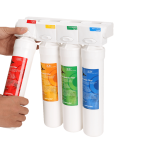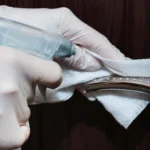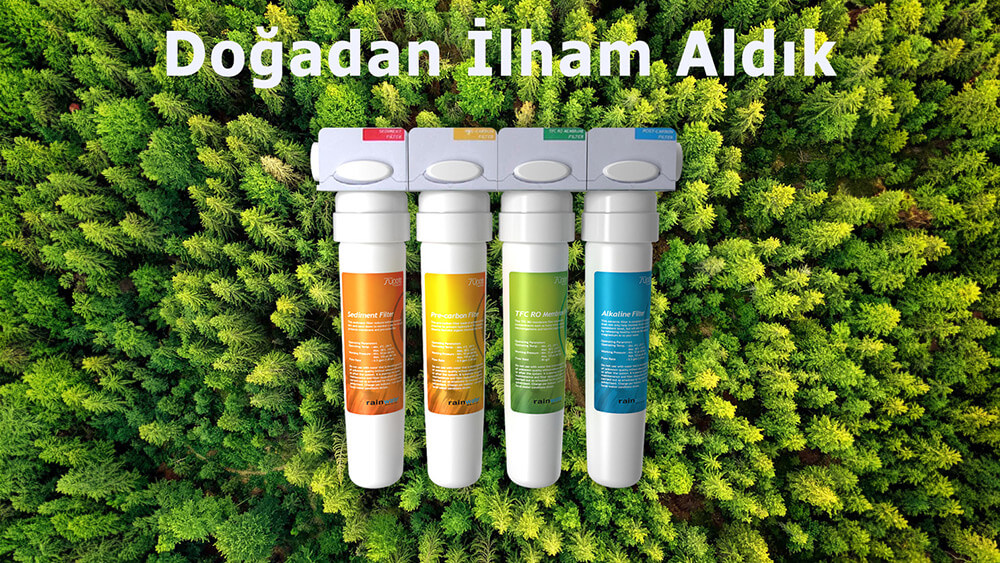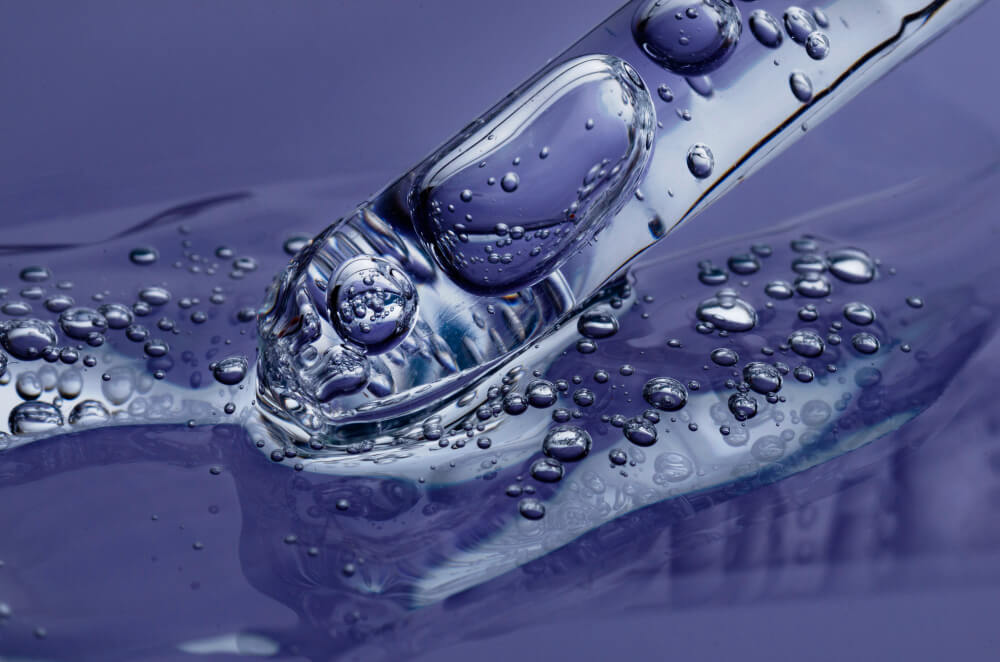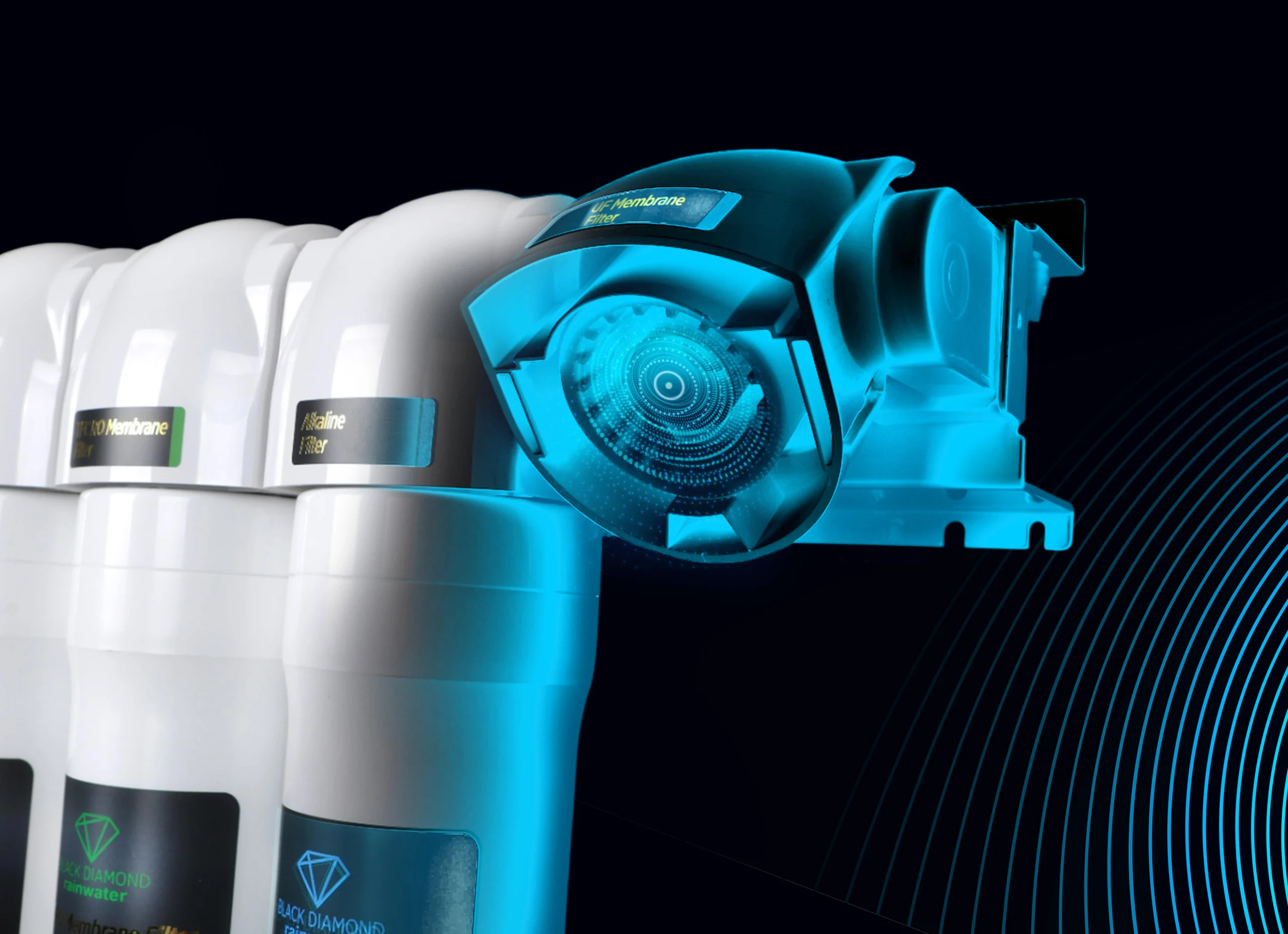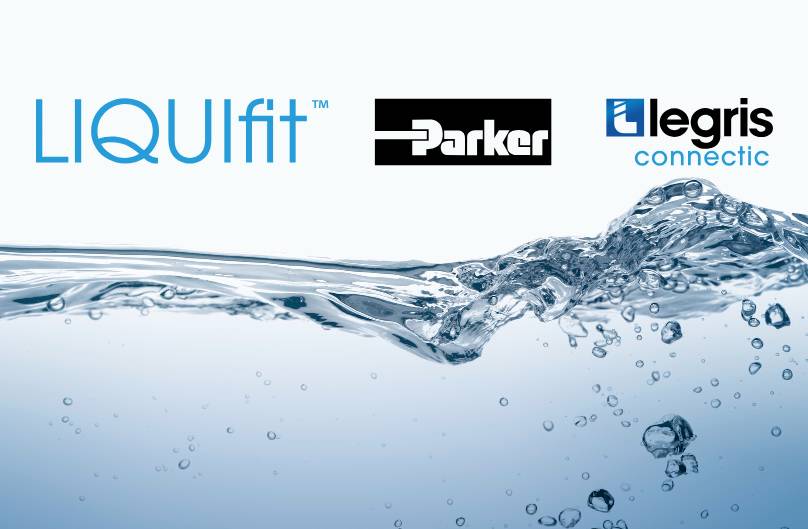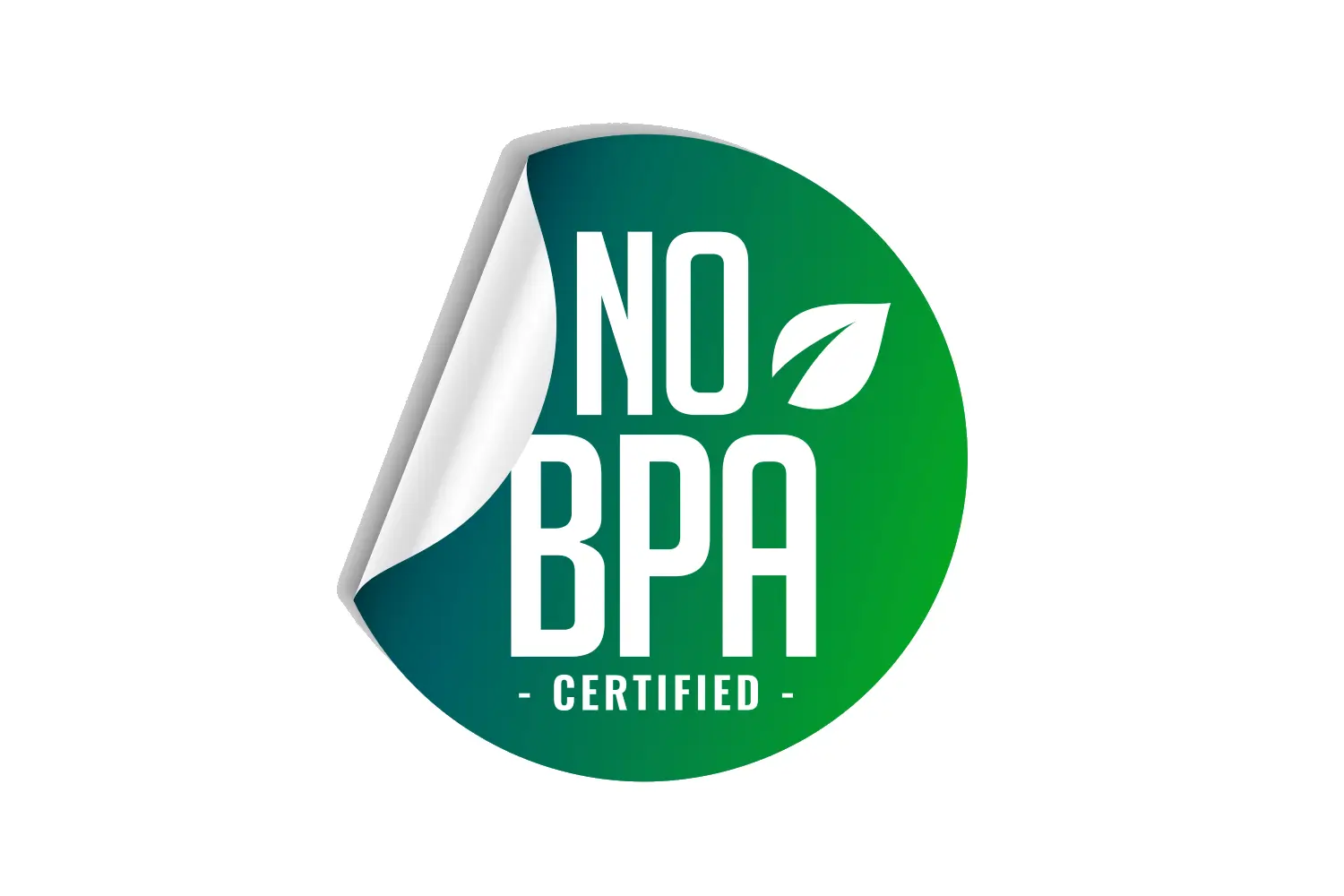Chlorine is a yellow-green coloured, pungent smelling element in the halogen group in the periodic table and is usually found in compounds in nature. “What is chlorine?” is a subject of curiosity due to its use in many areas. It has a very strong oxidising property and thanks to this feature, it is effective in the destruction of germs and bacteria.
Chlorine, which has a wide range of uses in the industry, is especially preferred as a disinfectant to ensure the hygiene of water. This element, which is also used in medicine, cleaning, paper and textile industry, is useful when used in the right quantities, but can be harmful in high concentrations.
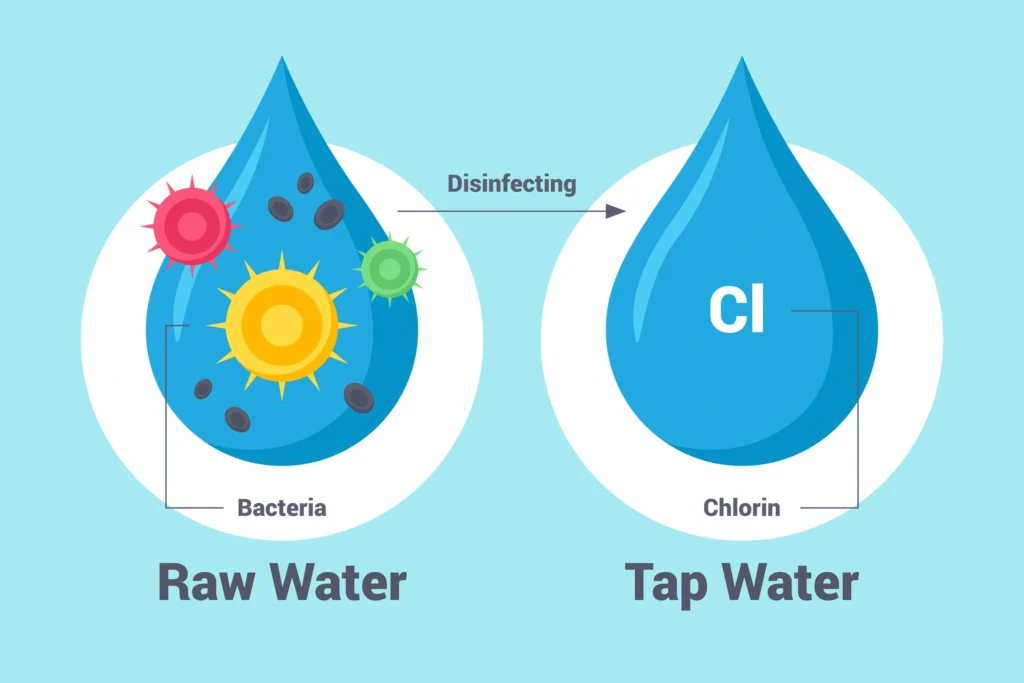
What is Chlorinated Water?
Chlorinated water is obtained by adding a certain amount of chlorine to drinking or utility water. This process is considered essential for the safe use of water. Bacteria, viruses and parasites in water sources, ponds or dams can threaten human health. At this point, the question “what is chlorinated water?” may be curious.
Chlorine destroys these microorganisms and makes the water potable. In addition, chlorine acts as a protective barrier to prevent re-contamination of water as it travels through the network pipes. Thanks to the chlorination process, it becomes possible for millions of people in cities to access healthy water.
Why is water chlorinated?
Although water sources may appear natural and clean, they may contain microscopic organisms and harmful substances. In the process of reaching home from the source, water is open to re-contamination in storage, pipes and distribution stages. Therefore, chlorination is performed for the microbiological safety of water.
Chlorine neutralises E.coli, Salmonella and many similar harmful bacteria. Thus, infectious diseases are prevented. In addition, chlorination protects water quality in long-distance water deliveries and safeguards public health.
Is There Chlorine in the Water We Drink?
In daily life, there is a certain amount of chlorine in the mains water flowing from the taps. This ratio is controlled by authorities such as the Ministry of Health and the World Health Organisation. Generally, a chlorine level between 0,2 and 1 mg / L is considered safe. In this way, the water remains microbiologically clean until it reaches the consumer. However, bottled natural spring water and carboy water do not contain chlorine because these waters are subjected to different disinfection methods. Tap water consumed at home always contains a certain amount of chlorine.
What Happens If We Consume Water Containing Chlorine?
When water containing chlorine is consumed, the body tolerates this substance in small doses. Therefore, the amount of chlorine in municipal water does not directly harm human health. When chlorine reaches the stomach, it is rapidly broken down and excreted from the body. However, when the chlorine rate exceeds normal, the taste and odour of the water changes negatively. Excessive consumption of chlorinated water can cause problems such as nausea, indigestion, dry skin and irritation of the respiratory tract in some sensitive people. Therefore, uncontrolled chlorine consumption is unfavourable.
In addition, prolonged consumption of highly chlorinated water can adversely affect the immune system and disrupt the body’s natural balance. Especially children, the elderly and individuals with weak immune systems may be more sensitive to high chlorine levels. For this reason, it is of great importance for health that water is regularly inspected and kept within safe limits.
What is the Ideal Amount of Chlorine in Drinking Water?
The ideal amount of chlorine in drinking water is set by international health authorities with clear limits. The World Health Organisation states that the amount of free chlorine in drinking water should be between 0.2 – 1 mg/L. While this ratio is sufficient to neutralise harmful microorganisms, it is at a level that does not harm human health. Values above 2 mg/L may pose a health risk. In Turkey, this range is accepted in the Ministry of Health drinking water standards. The ideal ratio balances the microbiological safety of the water with taste and odour.
What are the Harms of Drinking Chlorinated Water?
The adverse effects of chlorinated water on human health usually occur when water containing high amounts of chlorine is consumed over a long period of time. Chlorine is useful for hygiene of water in small quantities, but in large quantities it causes various disorders in the digestive system.
Especially irritation of the stomach and intestines can cause increased complaints in people with digestive problems over time. Leaving a bitter or metallic taste in the mouth is another effect that makes it difficult to drink water. The harms of chlorinated water are not limited to drinking.
It can also have negative effects when it comes into contact with the skin during showering or bathing in daily life. In people with skin sensitivity, excess chlorinated water can cause skin dryness, redness, itching and irritation. Disruption of the natural moisture balance of the skin is frequently observed in people who regularly come into contact with chlorinated water. Likewise, hair is also sensitive to excess chlorine. Hair washed with chlorinated water may experience problems such as drying, breaking, dulling and losing its natural shine. Another negative aspect of chlorine is that it reacts with organic substances in the water and forms by-products.
The most well-known of these by-products are trihalomethanes and chloramines. Scientific studies show that long-term and high levels of exposure to these compounds can be risky for health. In particular, trihalomethanes may have adverse effects on the respiratory tract and digestive system, and some studies suggest that they may be associated with cancer risk in the long term.
For all these reasons, it is of great importance to keep the chlorine level in drinking water under control. The amount of chlorine within the safe limits set by health authorities is sufficient for disinfection of water and does not harm health. However, exceeding this level should be carefully monitored as it may cause both taste and odour problems in the short term and health problems in the long term. Keeping drinking water at the ideal chlorine level is one of the most important conditions for a healthy life.
How to Clean Chlorinated Water?
It is important to clean chlorinated water in order to achieve a water that is both safer for health and tastier to drink. The most common and effective method is the use of advanced water treatment systems. These systems are specially designed to remove chlorine, bad odour, turbidity and harmful microorganisms in the water. Water purifiers, thanks to the different filter layers in their structure filters the water in a layered manner and performs a separate cleaning process at each stage.
Activated carbon filters retain a large proportion of chlorine molecules that give water an undesirable taste and odour. This stage eliminates the pungent taste especially caused by chlorinated water. The osmosis filter technology used for more advanced cleaning is based on the principle of passing water through a semi-permeable membrane with pressure. This method removes not only chlorine but also heavy metals, pesticides, detergent residues and various chemicals from the water. Thus, the water obtained is not only purified from chlorine, but also its mineral balance is preserved and it becomes cleaner and healthier.
Modern water purification devices used in homes offers a practical solution by combining these technologies. Water flowing from the taps, both visible and invisible impurities are purified when it passes through the device. In this way, drinking water is clearer, softer and more natural flavour. In addition, these devices can be used safely for many years when regular maintenance and filter replacement is performed. Although it is known that chlorine is beneficial in terms of providing hygiene of water, it becomes an important choice in terms of healthy life to use purification systems because it may have undesirable effects of excessive consumption in the long term.

 TR
TR
 Blog
Blog 
